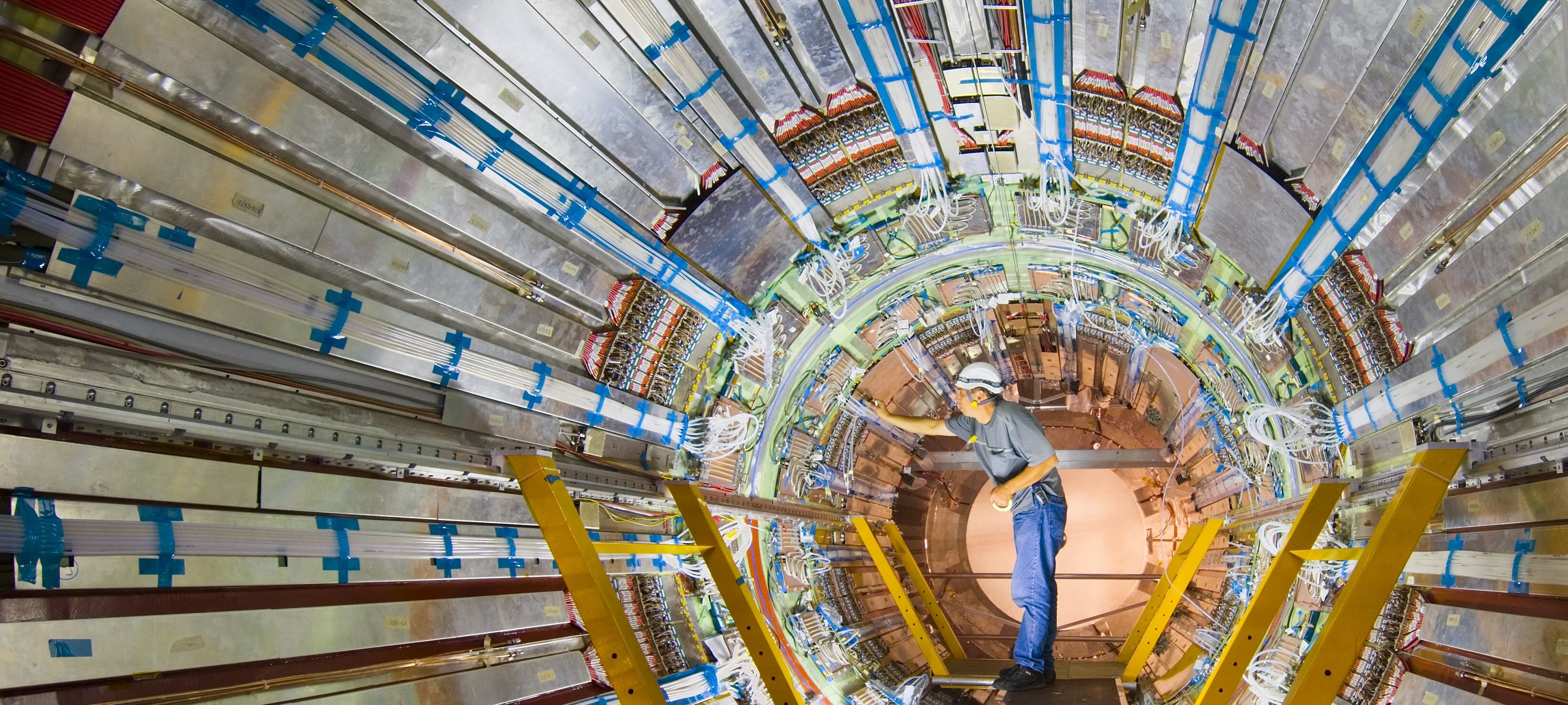ATLAS detects electrons and photons with greater clarity
12 April 2024 | By
If you want to study any of the key particles of the Universe – be it the Higgs boson or the W or Z bosons – you need to measure and identify electrons and photons. Measuring these particles is the main task of the ATLAS calorimeter detectors, the heaviest parts of the experiment and researchers are continuously improving their understanding of the calorimeter data.
New results released by the ATLAS Collaboration describe the significant advancements made in identifying electrons and photons. Researchers have updated the full ATLAS Run-2 dataset (collected from 2015 to 2018) with these improvements, thus reducing uncertainties and enhancing the accuracy of their results.
ATLAS physicists developed a new data-driven method to more effectively identify electrons. The method uses the common process of Z bosons decaying into electrons (Z→ee), deploying an iterative procedure to quantify the number of electrons in the dataset. This new method allowed researchers to reduce their reliance on simulated data in their analyses and, most critically, to maintain target efficiencies at the desired level despite the significant increase of “pile-up” collisions in the Run-2 dataset. Additional data and refined methodology have also enabled physicists to significantly reduce systematic uncertainties on their ability to identify photons. Both electron and photon identification efficiencies had a remarkable reduction in uncertainties by 30%–50% compared to the previous Run-2 results.
As new tools and methodologies are developed, ATLAS researchers are continuously improving the quality of their dataset, allowing them to narrow in on the most precise properties of the Universe.

In terms of calibration, the electron and photon energy calibration achieved unprecedented precision, more than doubling the accuracy of previous methods. This can be attributed to improved descriptions of the calorimeter electronics’ response, enhanced calibration of energy response in longitudinal layers of the calorimeter, and a new way to better differentiate the characteristic shapes of electrons and photons in the electromagnetic calorimeter. A novel approach was also implemented to further reduce systematic uncertainty by measuring the electron energy response relative to its transverse momentum (see figure) in events where Z bosons decay to electrons ( Z→ee). Ultimately, the calibrated energy measurements achieved an average precision of 0.4% for 10 GeV electrons, 0.3% for 1 TeV electrons and 0.2% for 60 GeV photons.
These advancements in electron and photon performance have been instrumental in the recent results, such as the measurement of the Higgs-boson mass in the diphoton decay channel, reducing the mass systematic uncertainty by a factor of four. As new tools and methodologies are developed, ATLAS researchers are continuously improving the quality of their dataset, allowing them to narrow in on the most precise properties of the Universe.
Learn more
- Electron and photon energy calibration with the ATLAS detector using LHC Run-2 data (JINST 19 (2024) P02009, arXiv:2309.05471, see figures)
- Measurement of the Higgs boson mass with H→γγ decays in 140 fb−1 of 13 TeV proton-proton collisions with the ATLAS detector (Phys. Lett. B 847 (2023) 138315, arXiv:2308.07216, see figures)
- Electron and photon efficiencies in LHC Run 2 with the ATLAS experiment (arXiv:2308.13362, see figures)
- Electron and photon performance measurements with the ATLAS detector using the 2015–2017 LHC proton-proton collision data (JINST 14 (2019) P12006, arXiv:1812.03848, see figures).
- See also the full list of ATLAS physics results.




